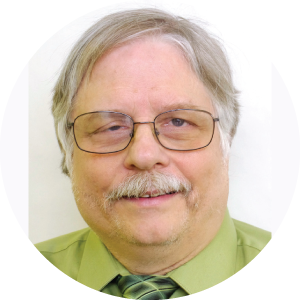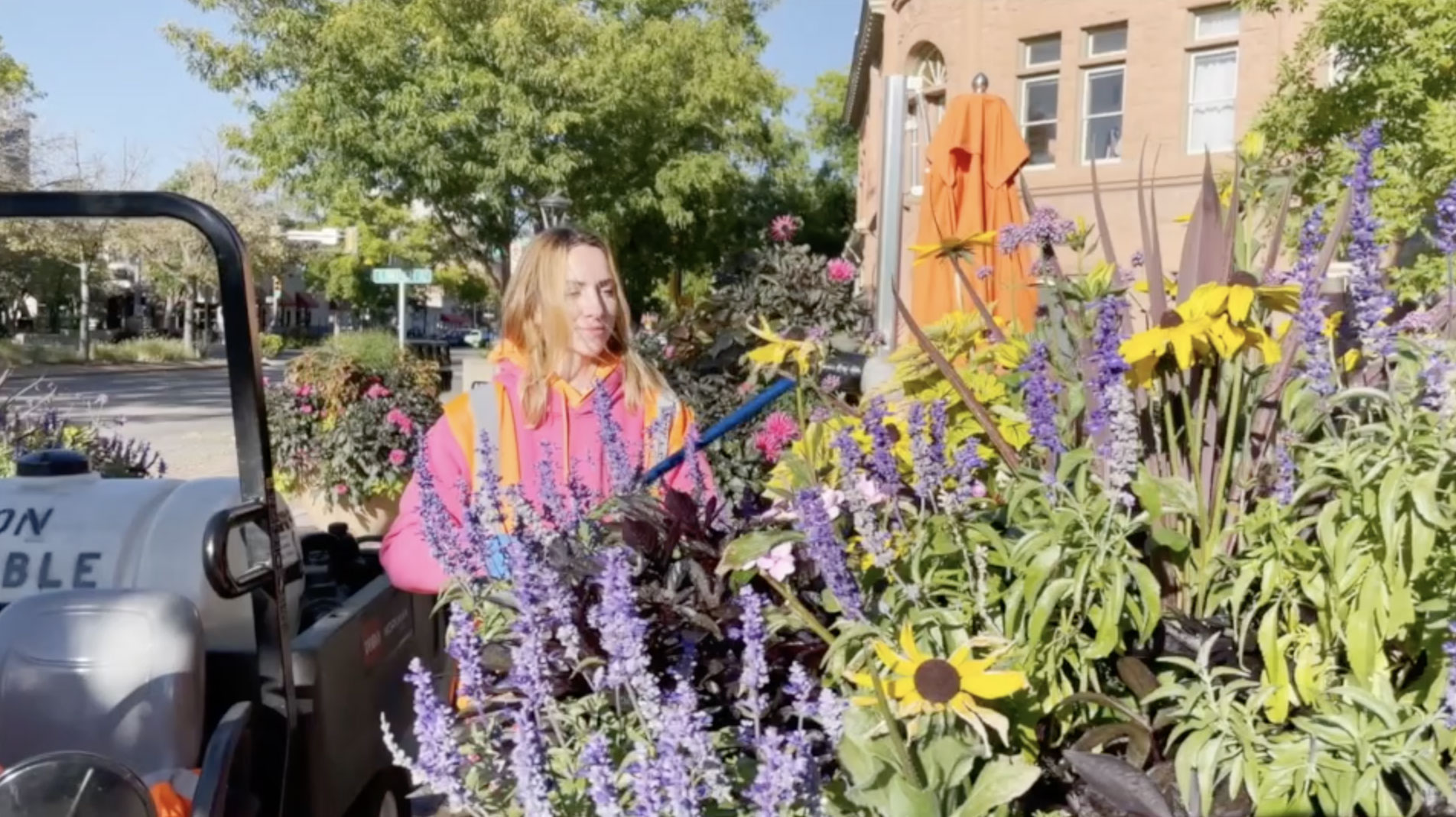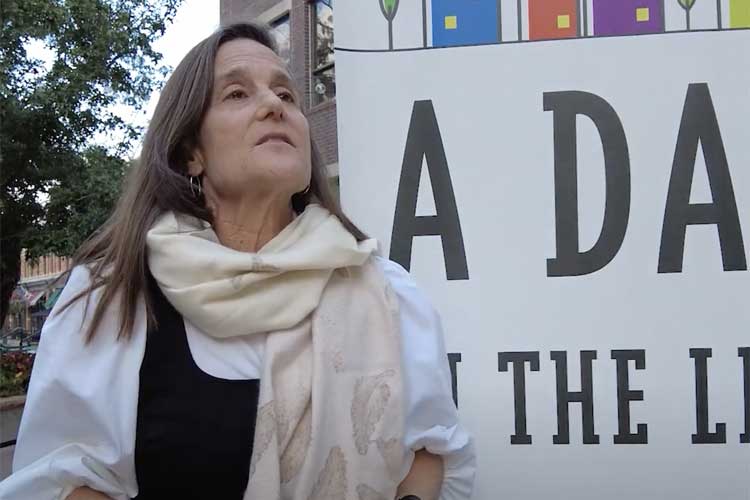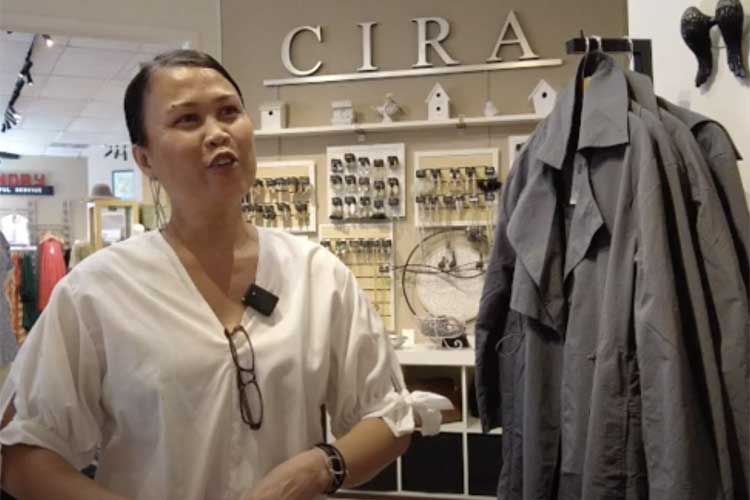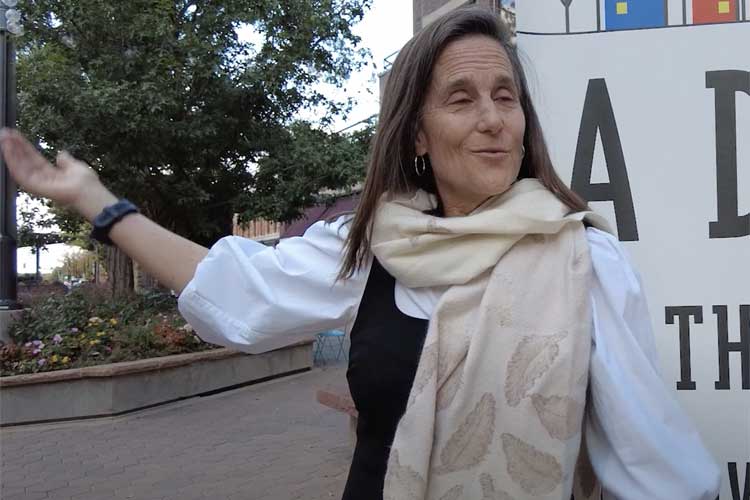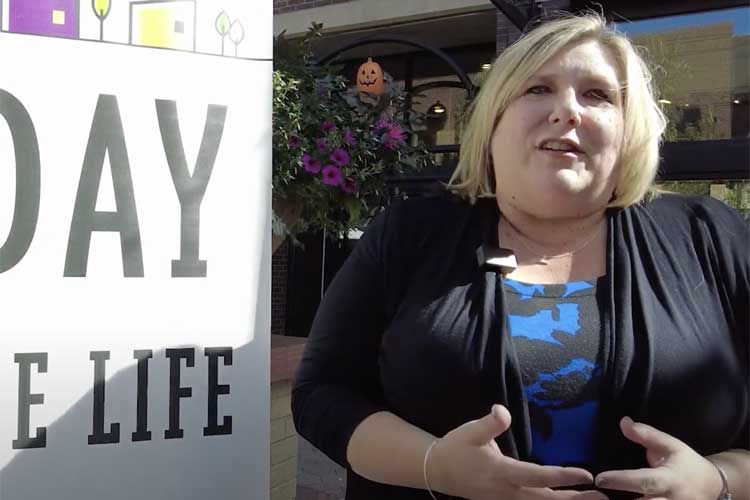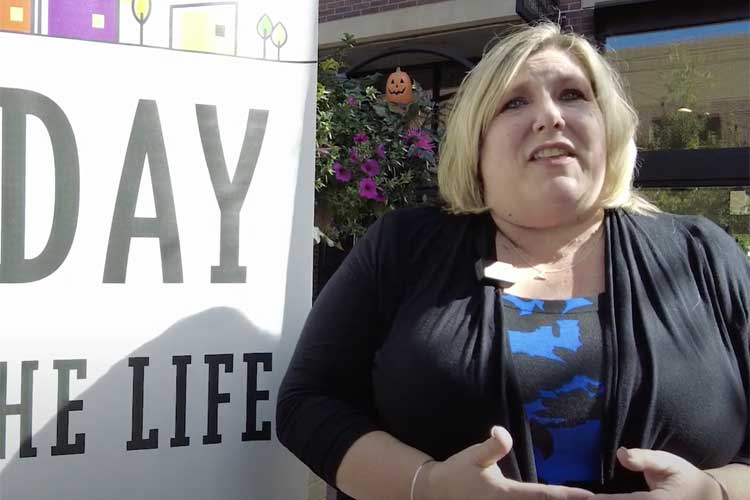The city’s leaders are united in their love and visions for downtown Fort Collins.

Fort Collins City Manager
Kelly DiMartino
“It really is a special place that connects people in so many ways,” said City Manager Kelly DiMartino.
“The power of connecting in a space is powerful,” added Mayor Jeni Arndt.
They’ve devoted much of their lives to helping make it, and the city that surrounds it, even better.
DiMartino has lived in Fort Collins for more than a quarter century, coming from Grand Island, Nebraska, in 1997 and starting with the city as communications and public involvement coordinator. She rose to become assistant to the city manager, assistant city manager, senior assistant city manager, deputy city manager, and then interim city manager before securing the top job in July 2022. She holds a master’s degree in business administration from Colorado State University.
Fort Collins has been home to Arndt since she was three weeks old, when her parents moved there from Boulder because, even in 1964, they felt Fort Collins was a great place to raise a family. She attended Moore Elementary School, Blevins Junior High and Poudre High. Even as she lived away – in college, in the Peace Corps in Morocco, and living and working in Mozambique, she always called Fort Collins home and moved back with her husband, Channing, and three children, and now lives three blocks from where she grew up. After more than three terms in the state Legislature, Arndt was elected mayor in 2021 and is seeking re-election.
Both serve on the governing commission for Northern Colorado Regional Airport, where panelists recently elected Arndt co-chair. And both believe the sky’s the limit for downtown Fort Collins.

Fort Collins Mayor
Jeni Arndt
“I look at the history of Old Town and think how innovative it was, how scary for its time that plan was” to create a pedestrian mall, “and how visionaries knew what it was to bring it together,” Arndt said. “The power of connecting in a space for pedestrians is powerful. Businesses thrive, and it’s the coordination and collaboration between the public sector and our vibrant and energetic private sector that has really made that go.
“Look at all our special events, shopping, dining, flowers, alleys, pianos, fountains,” she said. “It’s very deliberately designed for the town we want to be.”
A big attraction, DiMartino said, “is the mix of great locally owned businesses, shops and great restaurants, but also the ability to sit on a park bench next to beautiful flowers and just soak in the experience. There’s a natural vibrancy because of the investment the city has made. Just look at the kids playing in the fountain.”
During the COVID-19 pandemic with all its fears and restrictions, Arndt said, “Old Town provided a really necessary mental wellness spot. It still does. Yes, it gets rowdy on Friday and Saturday nights, but it also can be peaceful and tranquil.”
From random musicians to venerable venues and organized concerts in Old Town Square, DiMartino hailed “the role of music downtown. I do see us being a place that continues to foster that ‘music city’ environment – both impromptu and more organized places.”
She also credited efforts to connect downtown to the Cache la Poudre River to the north and east. “That’s a very special element,” she said. “As the river district continues to blossom, that’s something we will be attentive to as well.”
DiMartino said she’d like to encourage a downtown that “integrates seamlessly” into the river district, the Poudre River Whitewater Park and North College Avenue.
“Growing up here, we had our backs to the river. It just wasn’t a thing,” Arndt said. “Now it’s more open. We’ve got a pedestrian walkway down through the river district to the river. Before, we couldn’t even imagine downtown extending onto Linden Street.
“It’s the same idea that drove that innovation in the first place.”
How to keep the vibe going?
“Continue to build and enhance,” DiMartino said. “I think about the way as a city we do that is to invest in public spaces, encourage a mix of uses, and recognize that the market and private sector play an important role.”
Arndt added that one key is for downtown not to rest on its laurels – and she didn’t mean Laurel Street on the district’s southern edge.
“The city’s really growing and changing,” she said, “so we need to be as forward looking as our forefathers were.”
And maintenance can’t be overlooked, she added, “because it’s fun to be focused on shiny things instead of fixing the sewer. We don’t want to love Old Town to death.”
The city council has played a crucial role, they said.
At its Oct. 17 meeting, it approved the fiscal year 2024 budget for the Downtown Development Authority, including $6,435,066 for public and private investments and programs, $1,477,626 for DDA operations and maintenance, $9 million for revolving line of credit draws and $9,431,611 for the DDA debt service fund. The ordinance set the 2024 DDA mill levy at 5 mills, unchanged since tax year 2002.
Part of the revision to the city’s land-use code that won final approval at the same meeting was adding more residential uses to the area “instead of just doing suburb after suburb,” Arndt said. “That’s not sustainable.”
DiMartino pointed to the concept of “micromobility. We have to rethink how people are sharing those spaces. And how do we make sure downtown supports the infrastructure for bikes and pedestrians.”
Arndt noted that “parking in our most dense areas needs some reimagining,” and DiMartino added that “toward the end of this year, we’re coming to City Council with a new model of parking services. Demand management, the way our system works, is not necessarily a financially sustainable approach or creating the most traffic for businesses.”
Expanding public transit, especially into the evening hours, can help, DiMartino said, noting that on Sept. 29, the MAX fixed-guideway service along the Mason Street corridor resumed Friday and Saturday evening service.
“We really had to scale back that service during COVID, and then it’s been a challenge to recruit and retain drivers,” she said. “We’ve made some progress there. As staffing improves, we will look at other nights of the week.”
Consolidating city services will help as well, she said, including updating a “very dated” city hall and pursuing a general civic center master plan.
DiMartino sees a future for the heart of Fort Collins that is “continuing to see a diverse set of people enjoying downtown, with thriving small businesses, robust and integrated transportation and a built environment that honors the area.”
“For me,” Arndt added, “I think about the triple bottom line: economic, environmental and social. This is a place where we can really model that.”
